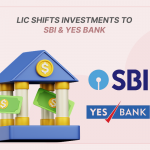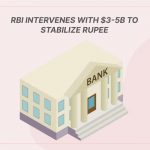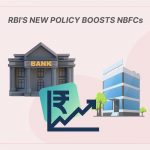The Indian banking sector is witnessing a strategic shift in 2025. Private sector banks, which have traditionally been aggressive in small and medium enterprise (SME) lending, are now turning their attention toward home loans (housing finance). The reason? SME loan growth has slowed significantly, while housing finance is emerging as a more stable and profitable segment.
This change highlights not only the changing dynamics of lending in India but also how banks are reshaping their portfolios to reduce risks and capture long-term opportunities.
Why Are Private Banks Slowing on SME Loans?
-
Economic Uncertainty: Many SMEs are facing cash flow challenges, leading to higher risk for banks.
-
Rising Defaults: Post-pandemic stress and inflation have increased default rates in SME lending.
-
Regulatory Pressure: Stricter norms for SME credit assessment have made approvals slower.
-
Lower Profit Margins: Compared to housing finance, SME loans often involve higher operational costs.
With these challenges, private banks are realigning toward low-risk, asset-backed lending like housing loans.
Why Housing Finance Is Attractive to Banks
Home loans are now the preferred product for many private banks. Here’s why:
-
Stable Returns: Home loans usually have long repayment tenures (15–25 years), ensuring steady interest income.
-
Lower Risk: Properties act as collateral, reducing banks’ risk exposure.
-
Growing Demand: Rising urbanization, government incentives for affordable housing, and increasing middle-class aspirations fuel growth.
-
Cross-Selling Opportunities: Banks can sell insurance, credit cards, and investment products to home loan customers.
According to RBI data, housing finance contributes nearly 50% of retail loan growth in India today.
Market Trends: Housing Loans in 2025
-
Interest Rate Competition: With repo rate stabilizing, banks are offering competitive home loan rates, starting from 8.2% onwards.
-
Digital Loan Processing: AI-driven credit scoring and instant approvals are making housing finance more seamless.
-
Affordable Housing Push: Schemes like PMAY (Pradhan Mantri Awas Yojana) continue to attract first-time buyers.
-
Tier-2 and Tier-3 Cities: Private banks are expanding aggressively in semi-urban areas, targeting younger families.
How Private Banks Are Pushing Home Loans
Private banks are adopting multiple strategies to aggressively push housing finance:
-
Lower Interest Rates: Offering special rates for salaried professionals and women borrowers.
-
Pre-Approved Loans: Using data-driven models to pre-approve existing customers.
-
Flexible Repayment: Step-up EMIs, balance transfers, and part-prepayment options.
-
Digital Outreach: Online campaigns, instant loan calculators, and mobile banking integration.
This not only increases loan books but also strengthens long-term customer relationships.
Impact on Borrowers
For borrowers, this shift has both pros and cons:
Advantages:
-
Lower interest rates due to competition
-
Faster processing with digital tools
-
Flexible repayment terms
Challenges:
-
Aggressive marketing may push unnecessary borrowing
-
Strict eligibility checks despite attractive rates
-
Rising property costs in urban centres
Future Outlook: Housing Finance as the Growth Engine
Private banks’ renewed focus on home loans is likely to reshape India’s lending landscape. Over the next 3–5 years:
-
Housing finance will remain the dominant retail loan category.
-
SME lending may shift to fintech’s and NBFCs.
-
Customer experience and digital lending speed will be key differentiators.
-
Affordable housing will drive demand beyond metro cities.
Q1: Why are private banks focusing more on home loans in 2025?
A: Slowing SME loan growth and rising risks have pushed banks toward stable, long-term housing finance.
Q2: Are home loan interest rates expected to fall further?
A: Rates are stabilizing, but competition among banks may drive selective reductions.
Q3: Is it easier to get a home loan from private banks now?
A: Yes, many private banks offer pre-approved loans and digital approvals, making the process faster.
Q4: What risks should borrowers watch out for?
A: While interest rates may look attractive, rising property costs and long repayment periods must be considered.
Q5: Will SME loans vanish completely?
A: No, but growth may shift to fintech lenders and NBFCs, while banks prioritize housing finance.
Conclusion
Private banks in India are aggressively promoting home loans as the next big growth driver. With SME lending slowing, housing finance offers stability, profitability, and long-term customer relationships. For borrowers, this means more choices, better rates, and faster approvals—but also the responsibility of making smart borrowing decisions.
In 2025 and beyond, the housing finance sector is expected to be the backbone of retail lending in India, making it crucial for both banks and customers to navigate this space wisely.













